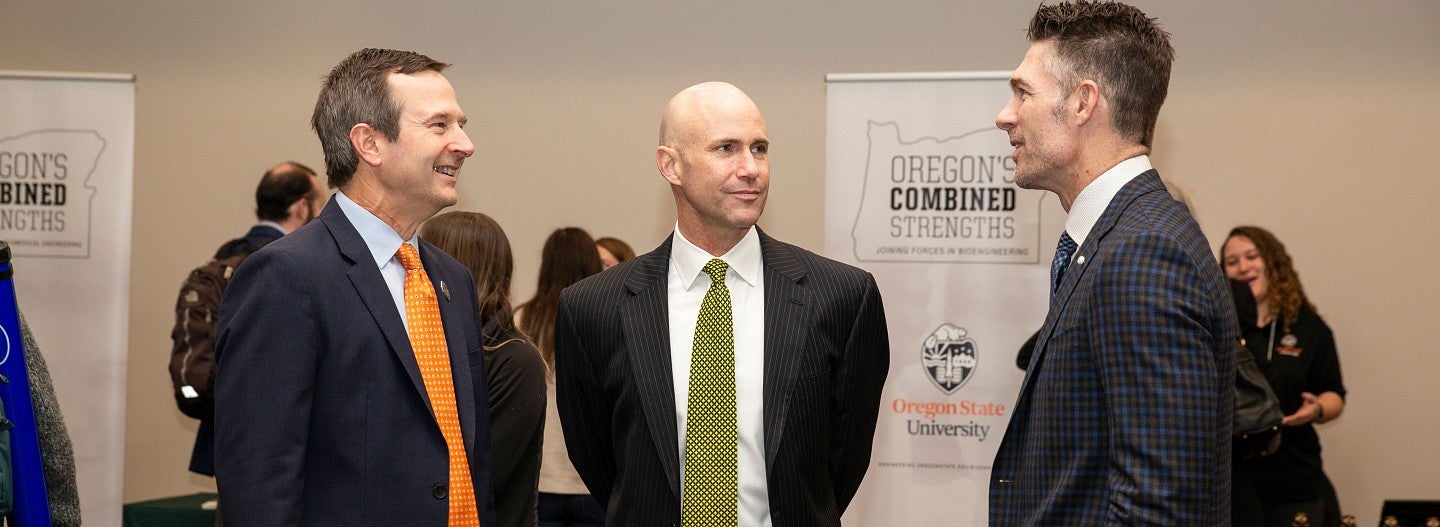

Ducks, Beavers turn rivalry on its ear in the name of medical discovery and advancing scientific impact
November 26, 2019
Most Oregonians are aware of the intensely competitive rivalry between the University of Oregon and Oregon State University on the gridiron.
But the state’s two largest research institutions are redefining the rivalry between the Beavers and the Ducks off the field. UO, OSU and Oregon Health & Science University are combining strengths to enhance our statewide reputation and impact in the applied sciences by leveraging state of the art facilities and infrastructure on all three campuses with the legacy of engineering at OSU, the excellence in science, communications and business at the UO and the preeminent clinical research programs at OHSU.
Students, faculty and practitioners from all three state institutions gathered in Corvallis for the inaugural Oregon Bioengineering Symposium on November 22, 2019. The meeting covered multiple areas of bioengineering and biomedical engineering, with an emphasis on technologies for precision health. The goal of the meeting was to promote collaboration and exchange of ideas among students, researchers and practitioners in Oregon and the surrounding region.
Earlier this fall, representatives from UO, OSU and OHSU converged at the 2019 Biomedical Engineering Society’s Annual Meeting in Philadelphia to centralize recruiting efforts to promote this collaboration and to attract the next generation of scientists to the state of Oregon.
The graduate programs in biomedical engineering at the Oregon Health & Science University, and bioengineering at the Oregon State University are collaborating with the University of Oregon’s Knight Campus to provide both breadth and depth in a range of topics including human (patho) physiology through training in measurement and data science and computational biology approaches to address unmet clinical needs.
The curricula are tailored for each student based upon their background, research direction and career goals and leverages the strengths at the three campuses, while providing an innovative platform for the next generation of citizen scientists to make positive societal impact.
